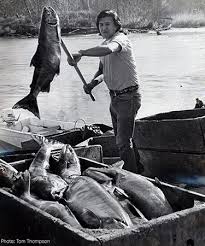Hank Adams In the annals of American records, many figures have played critical roles in shaping America’s trajectory; however, not all are significantly diagnosed now. Hank Adams is one such parent—a continuing recommend for Native American rights who devoted his existence to preventing justice, frequently backstage. His artwork has left an indelible mark on the battle for Native sovereignty and civil rights, but his name stays a lot, much less diagnosed than it should be. This article sheds light on the existence, achievements, and legacy of Hank Adams, an actual unsung hero.
Table of Contents
Early Life and Background
Hank Adams was born on May 16, 1943, at the Fort Peck Indian Reservation in Montana. As a member of the Assiniboine and Sioux tribes, Adams grew up in a world in which the struggles of Native Americans were a daily reality. These early studies would fuel his lifelong dedication to advocating for the rights and dignity of Indigenous peoples.

The Fish Wars and the Boldt Decision
One of Adams’ most vast contributions came at some stage in the 1960s and Nineteen Seventies, a length marked through using the “Fish Wars” in the Pacific Northwest. Native tribes in Washington State have been prevented from their treaty rights to fish in their conventional and accustomed locations, rights that have been frequently omitted via US authority. Adams played a pivotal function in organizing protests, along with the famous “fish-ins,” which have been modeled after the take-a-seat-ins of the Civil Rights Movement. These acts of civil disobedience have delivered countrywide attention to the problem.

Adams’ work culminated in the landmark 1974 Boldt Decision, which reaffirmed the treaty rights of Washington State tribes to half of the fish harvest. The ruling became a widespread victory for Native American rights and set a precedent for enforcing treaties across us.
A Life of Advocacy
Beyond the Fish Wars, Hank Adams became deeply worried about a wide range of Native American issues. He ended up being a key determiner at some unspecified time in the future of the profession of Alcatraz Island from 1969 to 1971, a protest that highlighted the federal authorities’ forgetting Native American rights and brought about expanded activism countrywide. Adams additionally labored tirelessly to beautify healthcare, schooling, and housing for Native communities.
Throughout his life, Adams preferred to paint backstage, facilitating speeches between Native leaders and government officials. His deep statistics of treaty law and ability to navigate the complexities of every Native and non-Native political sphere made him an invaluable advertising representative and strategist.
Legacy and Recognition
Hank Adams passed away on December 21, 2020, leaving at the back of a legacy of courage, resilience, and unwavering self-discipline to justice. Despite his vast contributions, Adams frequently avoided the highlight, permitting his moves to communicate for themselves. However, those who knew him and worked alongside him identified his profound effect on the Native American civil rights movement.
In 2006, Adams was presented with the American Indian Distinguished Service Award, an honor that identified his long-term service to Native American communities. His life’s paintings keep encouraging new generations of activists who bring the combat for Indigenous rights beforehand.
Conclusion
Hank Adams was a man of quiet strength and a strategist who understood that real alternate frequently calls for endurance, staying strong, and a deep record of the issues at hand. While he might not be a household call, his contributions to Native American rights are immeasurable. As our appearance decreases back on the records of Native activism, it’s miles clear that Adams’ legacy is of enduring importance—his lifestyle is a testimony to the strength of devoted, principled advocacy.
FAQs approximately Hank Adams
Who is Hank Adams?
Hank Adams was a Native American activist known for his paintings on treaty rights and Indigenous sovereignty.
Who was Hank Adams?
Hank Adams became an extraordinary Assiniboine-Sioux activist who fought for Native American rights and treaty fishing rights.
How did Hank Adams die?
Hank Adams died from natural reasons on December 21, 2020.
how old was Hank Adams when he died? How did Hank Adams die?
Hank Adams modified into 77 years vintage during his lack of life.
Why is Hank Aaron so famous?
He is well-known for his position in the Fish Wars, the Boldt Decision, and his advocacy for Native American rights.
How old is Hank Adams now?
Hank Adams passed away in 2020, so he’s not residing. He could be 80 years old in 2024 if he had been nevertheless alive.
Why is Hank Aaron so famous?
Hank Aaron is well-known for breaking Babe Ruth’s career home run document in baseball.
Does Hank have a son?
There may be no extensively identified data about Hank Adams having a son. However, exclusive famous individuals named Hank, together with Hank Aaron or Hank Williams, each had children. Hank Aaron had three youngsters, while Hank Williams had a daughter, Jett Williams, and a son, Hank Williams Jr.
How antique became Hank while he fell?
This query is ambiguous without additional context. If it concerns a selected Hank, including Hank Williams or Hank Aaron, additional information is needed to offer an accurate answer.
#hank adams#hank adams died#hank adams kiewit#hank adams born#hank adams videos#hank adams activist#hank adams age#hank adams quotes#who is hank adams#who was hank adams#hank adams glass#how did hank adams die#hank adam s#hank adams cause of death#hank adams blenko#hank adams southern company#hank adams chicago#hank adams actor#hank adams death cause#hank adams how did he die#hank adams rise gardens#how old was hank adams when he died#hank adams kiewit salary#hank adams obituary#how did hank adams died.